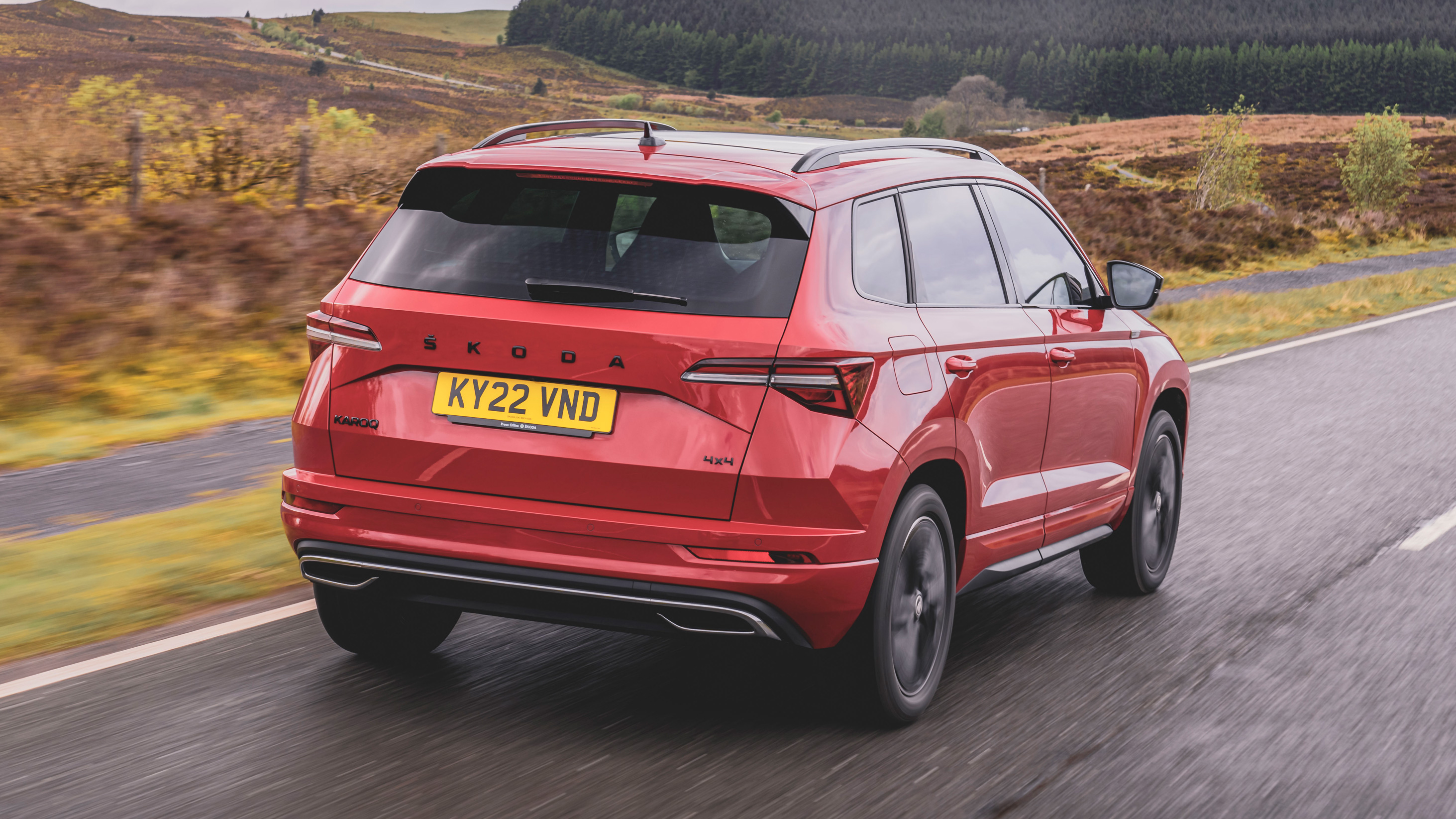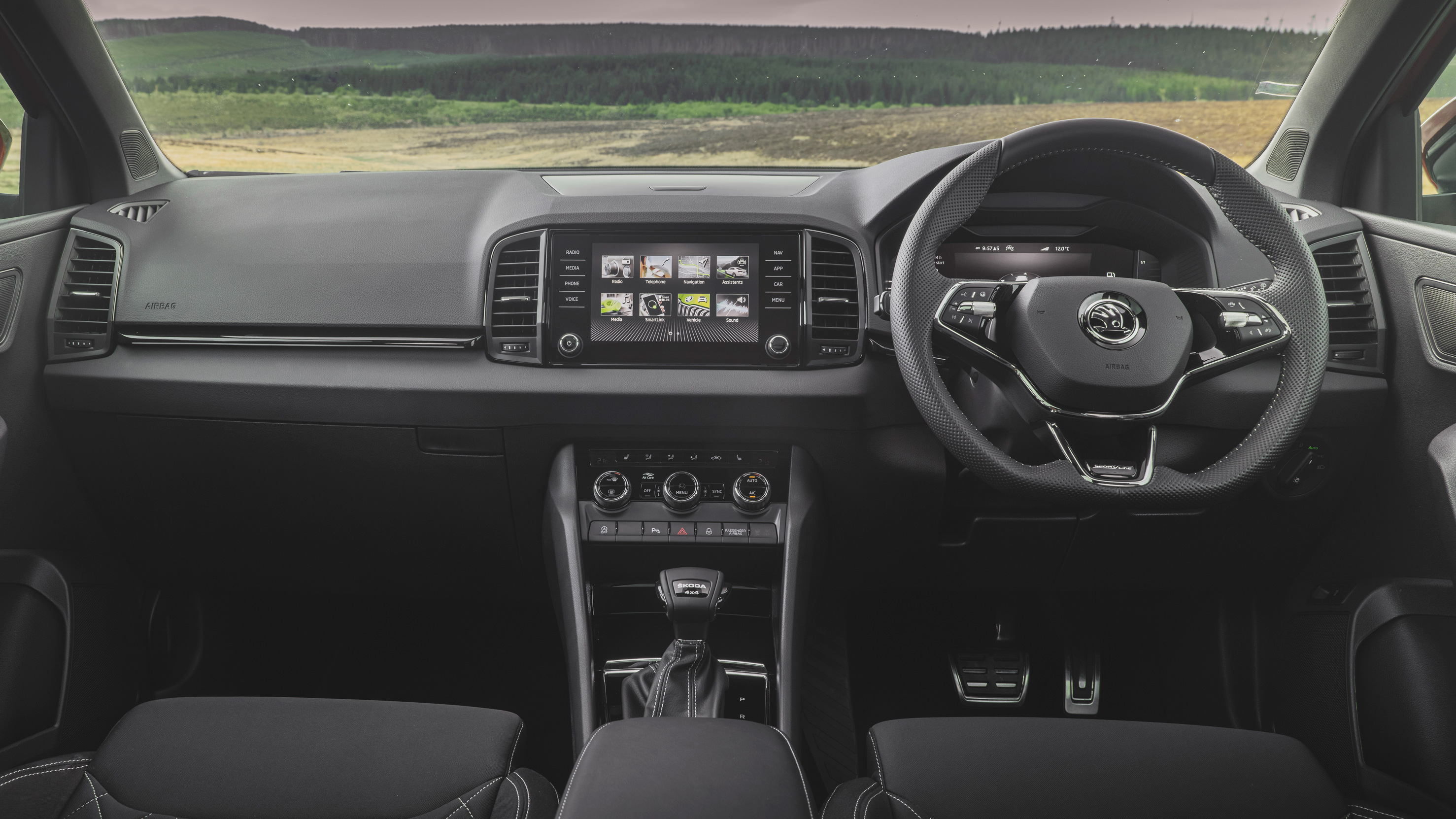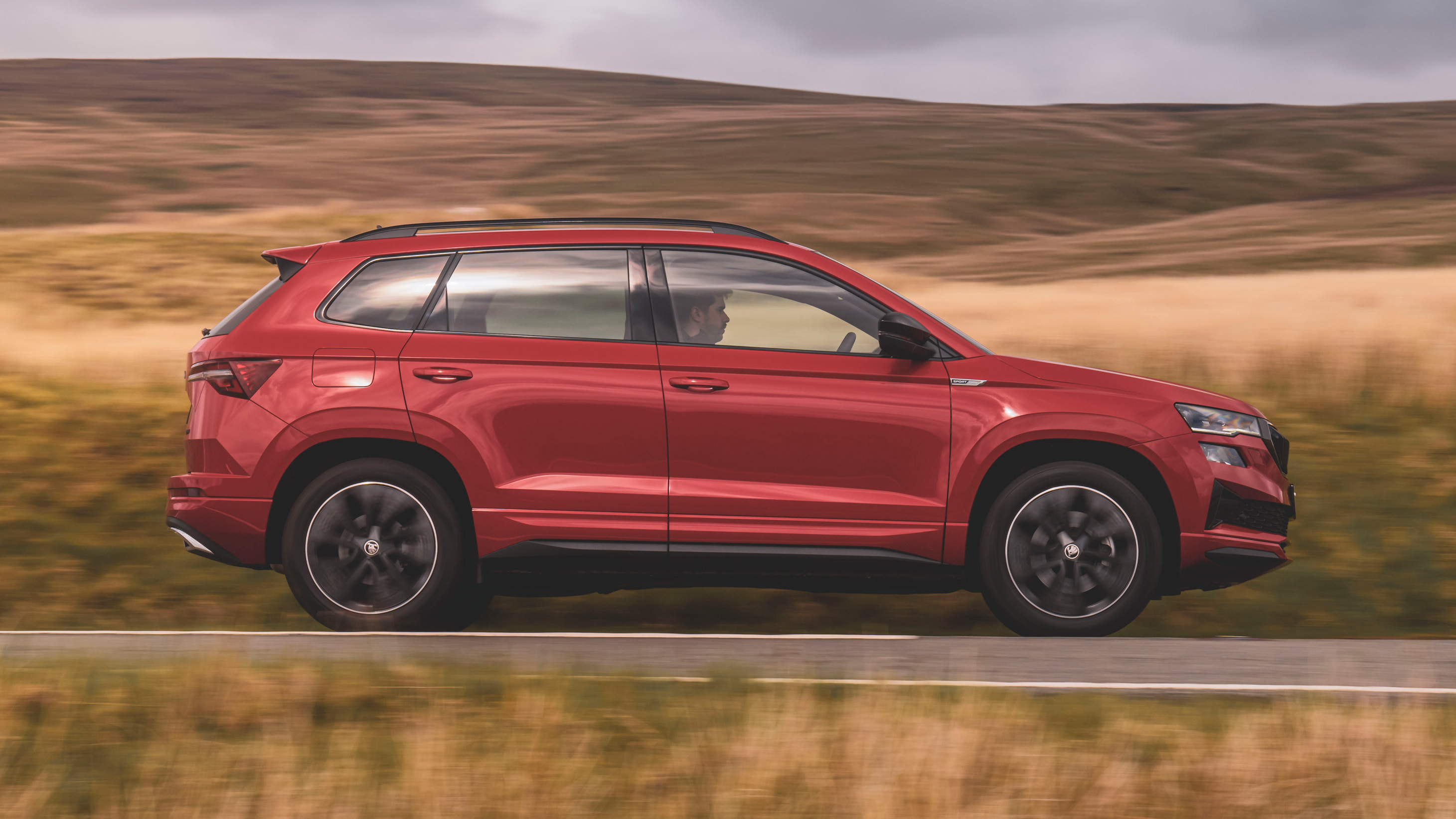
Interior
What is it like on the inside?
There’s plenty to like inside. The dashboard is designed around a central, glassy touchscreen– 8.0in as standard, 9.2in as an option. Wireless Apple/Android connectivity is now built in, and the screen is a heck of a lot more responsive than the newer systems in the likes of the VW ID.3 and Golf. The native satnav isn’t the most intuitive thing to follow, but unlike smartphone mirroring you can have the map displayed neatly on the digital dash.
The Karoq retains a useful slug of buttons for the aircon – long may they continue – and you can delve into the touchscreen if you want to. It’s a grown up cabin, and even the entry-level version feels more expensive than it really is. You probably couldn’t expect too much more from a car for this money.
Is it practical?
The Karoq’s interior design places it squarely a generation behind the latest crossovers on the market, but that’s not necessarily bad. You’ve got a decent array of cubbies and storage bins about the place to lose things in, and of course Skoda’s customary array of parking ticket holders, loose coin slots and pen holders.
The central armrest contains a ‘jumbo’ storage box (Skoda’s words, but we’d have to agree) and under the passenger seat there’s an umbrella in a holster. Someone’s really thought about this stuff, and they deserve a light round of applause.
There’s decent legroom in the back of the car, though the raised tunnel in the middle of the floor does compromise space a little for a middle passenger. You can travel very comfortably with four people onboard.
In the boot you’ve got 521 litres of space, which increases to 1,630 with the seats knocked down. That’s bigger than a Nissan Qashqai, Citroen C3 Aircross and a Dacia Duster and on par with a Peugeot 3008.
Featured

Trending this week
- Car Review
BMW iX3






